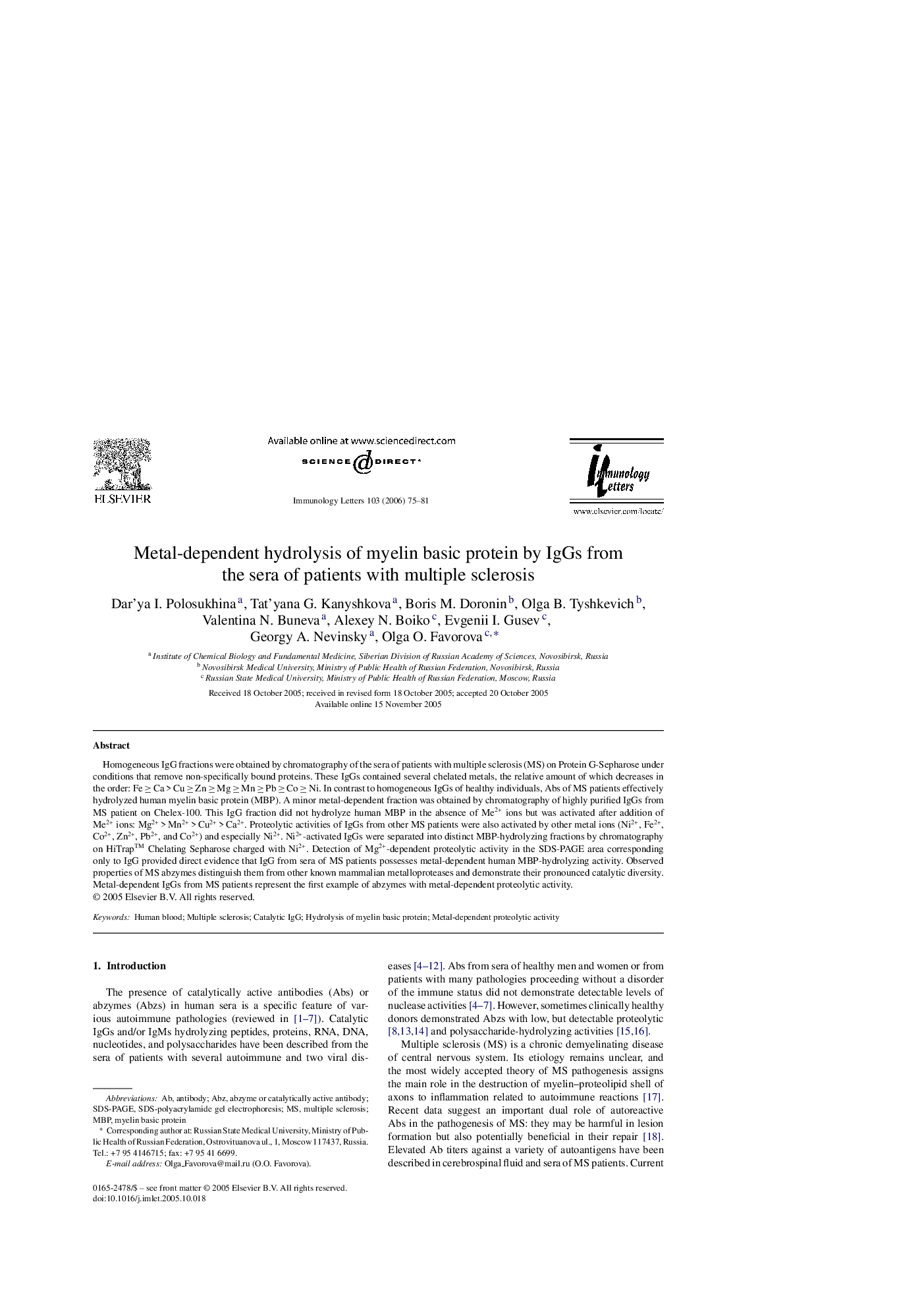| Article ID | Journal | Published Year | Pages | File Type |
|---|---|---|---|---|
| 3356546 | Immunology Letters | 2006 | 7 Pages |
Homogeneous IgG fractions were obtained by chromatography of the sera of patients with multiple sclerosis (MS) on Protein G-Sepharose under conditions that remove non-specifically bound proteins. These IgGs contained several chelated metals, the relative amount of which decreases in the order: Fe ≥ Ca > Cu ≥ Zn ≥ Mg ≥ Mn ≥ Pb ≥ Co ≥ Ni. In contrast to homogeneous IgGs of healthy individuals, Abs of MS patients effectively hydrolyzed human myelin basic protein (MBP). A minor metal-dependent fraction was obtained by chromatography of highly purified IgGs from MS patient on Chelex-100. This IgG fraction did not hydrolyze human MBP in the absence of Me2+ ions but was activated after addition of Me2+ ions: Mg2+ > Mn2+ > Cu2+ > Ca2+. Proteolytic activities of IgGs from other MS patients were also activated by other metal ions (Ni2+, Fe2+, Co2+, Zn2+, Pb2+, and Co2+) and especially Ni2+. Ni2+-activated IgGs were separated into distinct MBP-hydrolyzing fractions by chromatography on HiTrap™ Chelating Sepharose charged with Ni2+. Detection of Mg2+-dependent proteolytic activity in the SDS-PAGE area corresponding only to IgG provided direct evidence that IgG from sera of MS patients possesses metal-dependent human MBP-hydrolyzing activity. Observed properties of MS abzymes distinguish them from other known mammalian metalloproteases and demonstrate their pronounced catalytic diversity. Metal-dependent IgGs from MS patients represent the first example of abzymes with metal-dependent proteolytic activity.
